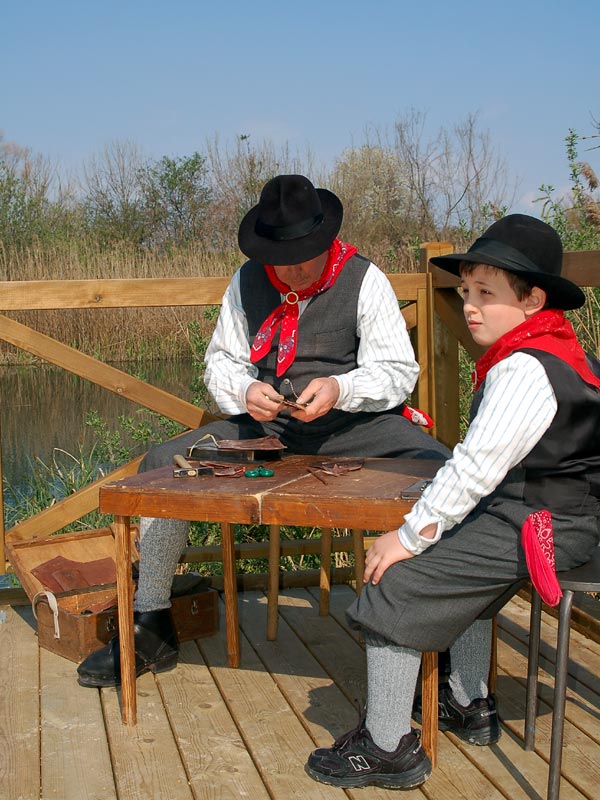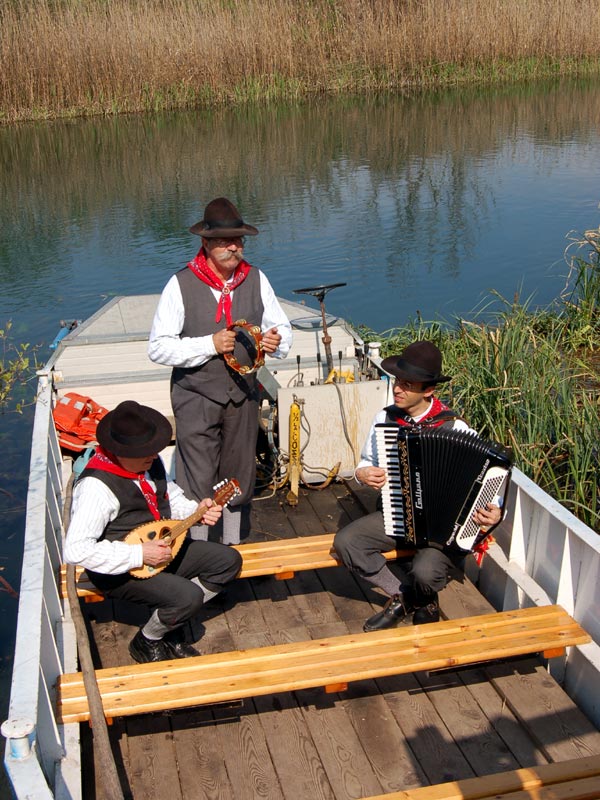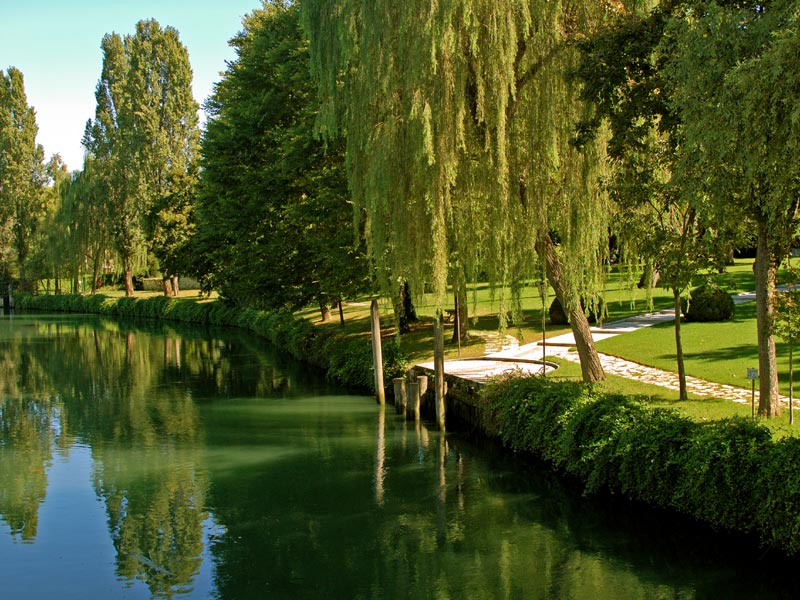The most common plants in the marshy areas along the Sile are reeds (canèe), bur-reeds (paére), bulrushes (paeròssi) and sedges (paja da carèghe). In the past, this vegetation provided abundant material (strame) for use in tending livestock (par starnìr e bestie) and as bedding (métergheo sóto dove che e dormìa), thus helping to increase production of the precious manure. But as well as this main function, marsh plants also provided the raw material for local trades, now definitively lost at least at professional level.
Reeds (Phragmites australis) "Canèe"
As well as being used as bedding in animal sheds, the end part (plume and about 50 cm of stem) could be used to make particularly soft brooms, popular for sweeping the terraces of luxury houses (
pa e teràsse dée case lussuose) and commonly known as "terrace brooms". These were cut using a sickle (
messóra) just before the general cutting of the
"paeú" which took place in early July. Immediately after cutting, the external sheath was removed and they were spread out on racks made from reeds to dry in the shade. These racks (
grisiòe) were also used to raise silkworms. Once dried, the reeds were taken to Treviso market where the bulk traders priced them and a preliminary sales agreement was drawn up. They were then divided into bundles of 5 kg each and sold to the companies. They fetched quite a good price (about one and a half lire per kilogram), considering that before the Second World War, two kilograms of reeds bought a kilogram of meat. In times of poverty when many had nothing, "reed stealing" was quite a common practice, and not just among boys.
Bur-reeds "Paére" (Sparganium, sp)
Unlike reeds, bur-reeds grow underwater and have wide leaves. They were of great importance as they were used to supplement the cattle forage, not always abundant. The locals recall that:
"A sera, co se gaéa varnà e bestie, ìnvésse de darghe càne, se ghe impinìva a grùpia de paére e eóre e rosegàva." "In the evening after tending to the cattle, instead of giving them maize stalks cut into pieces, the crib was filled with bur-reeds and they munched on these".
Bulrush "Paeròssi" (Typha latifolia)
As well as being used as animal bedding, they also had an "industrial" use. Gathered before the general cutting of the marsh and dried in the shade of hedges and rows of vines, the leaves were sold to the barrel makers who inserted them into the joint between the slats on the bottom of barrels and vats. The market price was a little higher than the price for reeds.
Sedge "Pàja da carèghe" (Carex sp)
This was ideal for making straw chair bottoms, a task left to specialised craftsmen from the mountains. During the winter, in exchange for a little milk, a plate of pasta and a few coins, they worked in the cowshed where they then spent the night.










